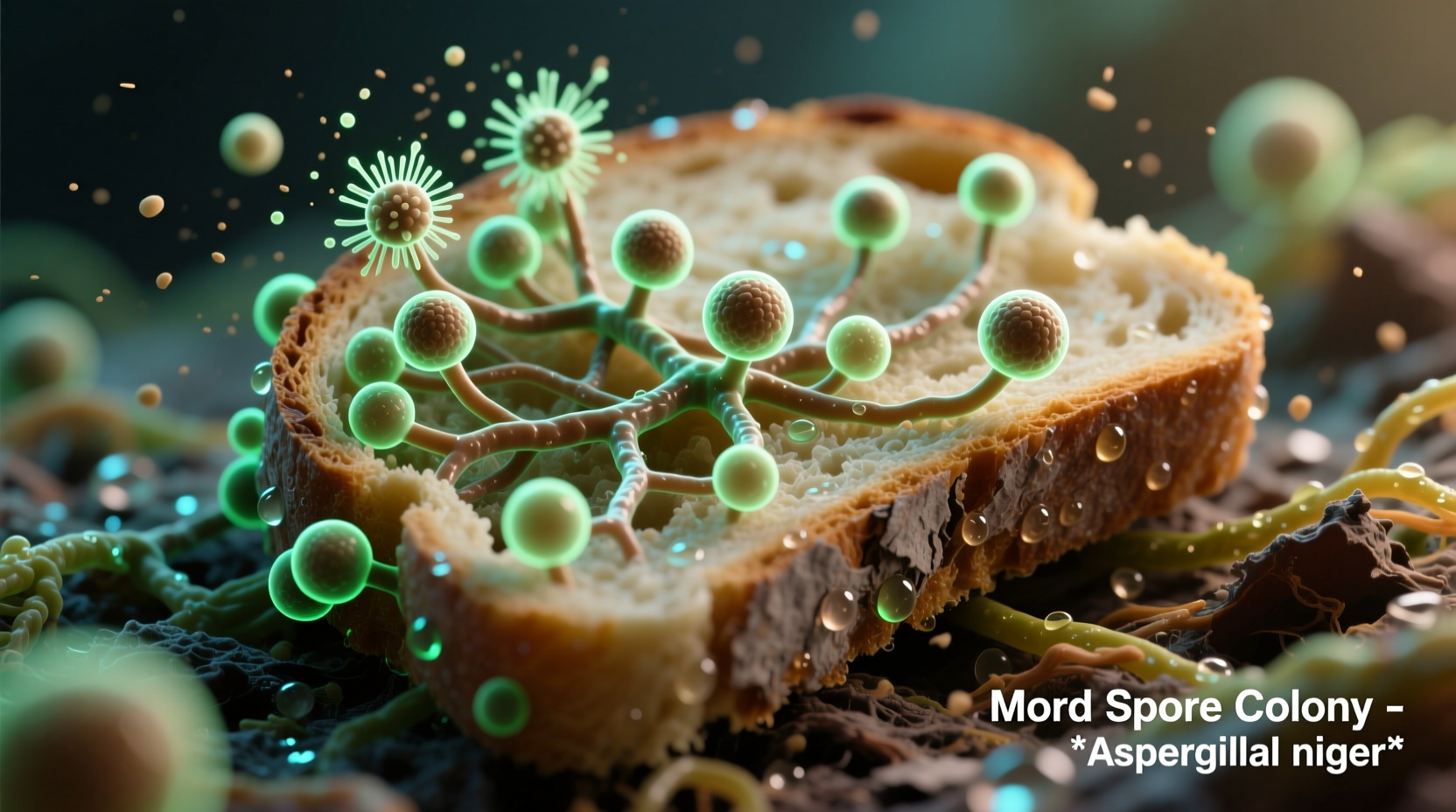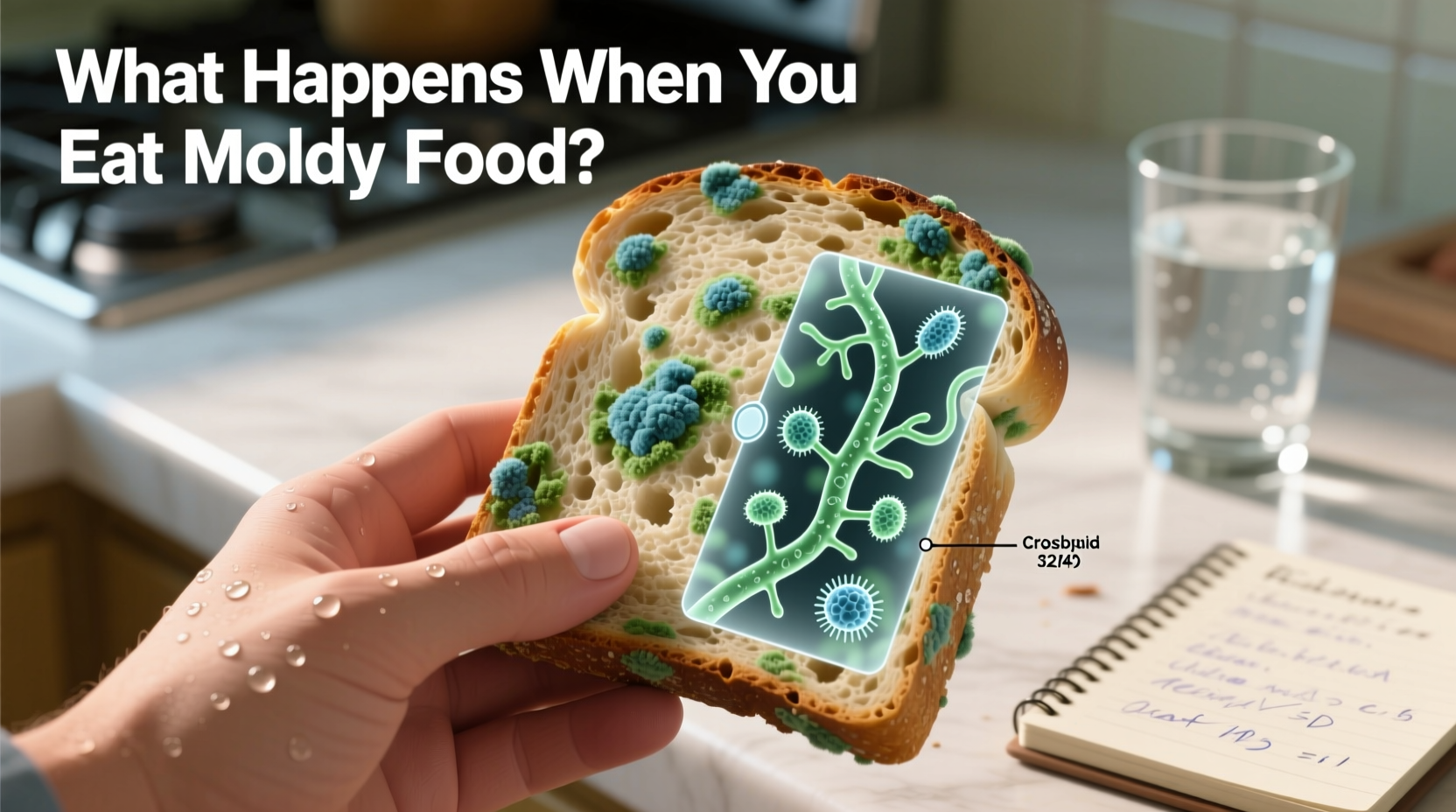If you eat moldy food, most healthy adults will experience mild digestive discomfort at worst, but certain molds produce dangerous mycotoxins that can cause serious food poisoning. The severity depends on mold type, amount consumed, and individual health factors—immediate symptoms may include nausea, vomiting, and diarrhea, while long-term exposure to toxic molds can damage organs.
Discover exactly what happens inside your body when you consume mold, how to assess your risk level, and crucial steps to take if you've accidentally eaten moldy food. This guide separates food safety facts from common myths using evidence-based recommendations from food safety authorities.
Understanding Mold Exposure: What Really Happens in Your Body
When you eat moldy food, your body immediately recognizes the foreign organisms and triggers defensive responses. According to the U.S. Food and Drug Administration, most common household molds aren't immediately dangerous to healthy individuals, but certain species produce harmful substances called mycotoxins that survive digestion.
Within 30 minutes to 6 hours after consumption, your digestive system may react with:
- Nausea and stomach cramps as your body attempts to expel the contaminants
- Increased saliva production (a natural defense mechanism)
- Accelerated digestion to move the substance through your system
Your liver immediately begins detoxification processes, working to neutralize any mycotoxins before they enter your bloodstream. For most people eating small amounts of common molds like those found on bread or fruit, symptoms resolve within 24 hours without medical intervention.

When Mold Becomes Dangerous: Risk Assessment Guide
Not all mold exposure carries the same risk. Understanding these critical distinctions helps determine whether you need medical attention:
| Mold Type | Common Food Sources | Health Risk Level | Immediate Action Required |
|---|---|---|---|
| Penicillium (blue/green) | Cheese, bread, fruit | Low-Moderate | Monitor symptoms; discard remaining food |
| Aspergillus (green/black) | Nuts, grains, spices | High | Seek medical advice if symptoms develop |
| Stachybotrys (black) | Water-damaged foods | Severe | Immediate medical attention required |
| Cladosporium (black) | Meat, dairy, produce | Moderate | Consult healthcare provider if immunocompromised |
This comparison, based on Centers for Disease Control and Prevention guidelines, shows why context matters when assessing mold exposure. While penicillium molds commonly found on cheese might be safe for healthy adults to consume in small amounts (some cheeses intentionally use these molds), aspergillus species produce aflatoxins that the World Health Organization classifies as carcinogenic even in trace amounts.
Symptom Timeline: What to Expect After Mold Consumption
Your body's response to mold follows a predictable progression. Recognizing these stages helps determine appropriate action:
- 0-6 hours: Initial digestive distress including nausea, stomach cramps, and possible vomiting as your body attempts to expel the contaminants
- 6-24 hours: Peak symptoms may include diarrhea, headache, and mild fever as inflammatory responses activate
- 24-72 hours: Resolution for most healthy individuals; persistent symptoms indicate possible mycotoxin exposure requiring medical evaluation
- 72+ hours: For toxic mold exposure, symptoms may progress to liver enzyme elevation or neurological effects requiring specialized treatment
The USDA Food Safety and Inspection Service emphasizes that immunocompromised individuals, pregnant women, and children often experience more severe reactions with shorter incubation periods. If you fall into these categories and have consumed moldy food, contact a healthcare provider even if symptoms seem mild initially.
Immediate Action Plan: What to Do If You've Eaten Moldy Food
Follow these evidence-based steps if you've accidentally consumed moldy food:
- Don't panic – Most household mold exposures cause only temporary discomfort
- Identify the food source – Different foods carry varying mold risks (see risk assessment table above)
- Monitor for symptoms – Keep track of onset time and symptom progression
- Stay hydrated – Sip water or electrolyte solutions if experiencing vomiting or diarrhea
- Preserve a sample – If severe symptoms develop, having the contaminated food helps medical professionals identify the mold type
- Seek medical attention if you experience: severe abdominal pain, high fever, bloody stool, or symptoms lasting more than 48 hours
Food-Specific Guidance: When to Toss vs. Trim
Not all moldy foods require complete disposal. The FDA provides specific guidance based on food structure:
- Hard cheeses & firm vegetables (like carrots, cabbage): Cut off at least 1 inch around and below the mold spot; the dense structure prevents deep penetration
- Soft cheeses & processed meats: Discard entirely – molds penetrate these porous foods more easily
- Bread & baked goods: Discard the entire item – mold spreads invisibly through soft textures
- Jams & preserves: Discard completely – mold produces toxins that spread throughout the product
- Fruits & vegetables: Firm produce (apples, bell peppers) may be salvaged with 1-inch margin; soft produce (berries, tomatoes) requires complete disposal
Preventing Mold Exposure: Practical Food Safety Habits
Reduce your risk of accidental mold consumption with these professional kitchen-tested practices:
- Store high-moisture foods in airtight containers with moisture-absorbing packets
- Check refrigerator temperature regularly (should be 40°F or below)
- Rotate pantry items using the "first in, first out" method
- Inspect foods thoroughly before consumption, especially in high-risk categories
- Understand expiration dates: "Best by" refers to quality, not safety
- When in doubt about mold safety, follow the chef's golden rule: "When mold grows, the food goes!"
When Home Remedies Fail: Recognizing Serious Mold Poisoning
While most mold exposures cause only temporary discomfort, certain situations require immediate medical attention. Seek emergency care if you experience:
- Symptoms lasting longer than 72 hours
- High fever (over 101.5°F) accompanying digestive symptoms
- Difficulty breathing or swallowing
- Neurological symptoms like dizziness or confusion
- Blood in vomit or stool
These warning signs may indicate exposure to dangerous mycotoxins like aflatoxins or ochratoxins that require specialized medical treatment. The National Agricultural Library confirms that while rare in developed countries with proper food safety regulations, severe mold poisoning cases do occur and respond best to prompt intervention.











 浙公网安备
33010002000092号
浙公网安备
33010002000092号 浙B2-20120091-4
浙B2-20120091-4